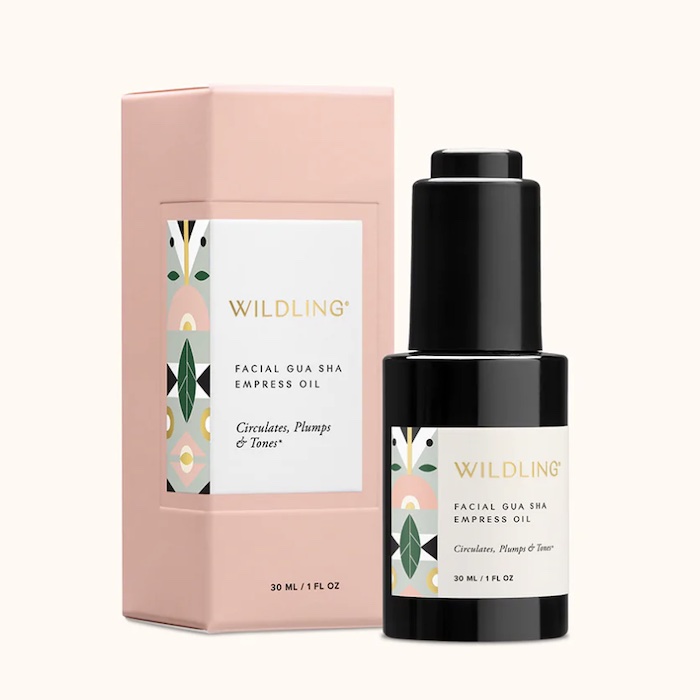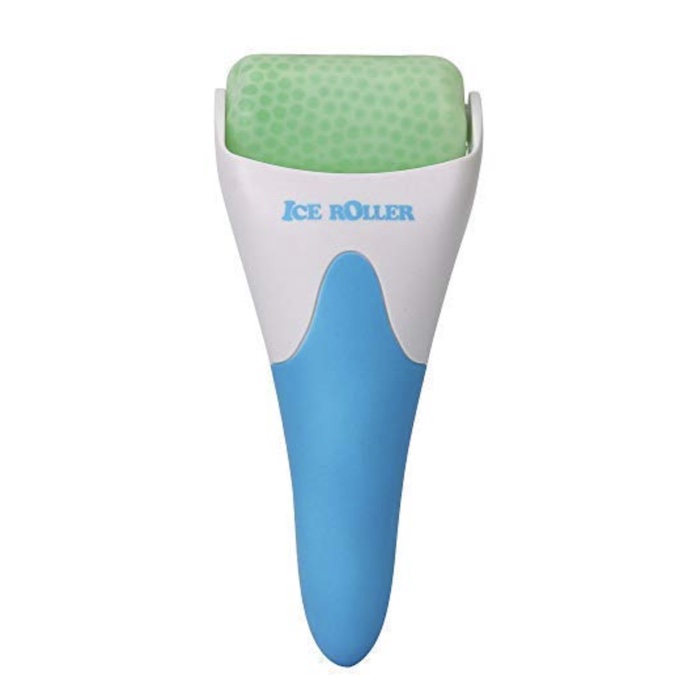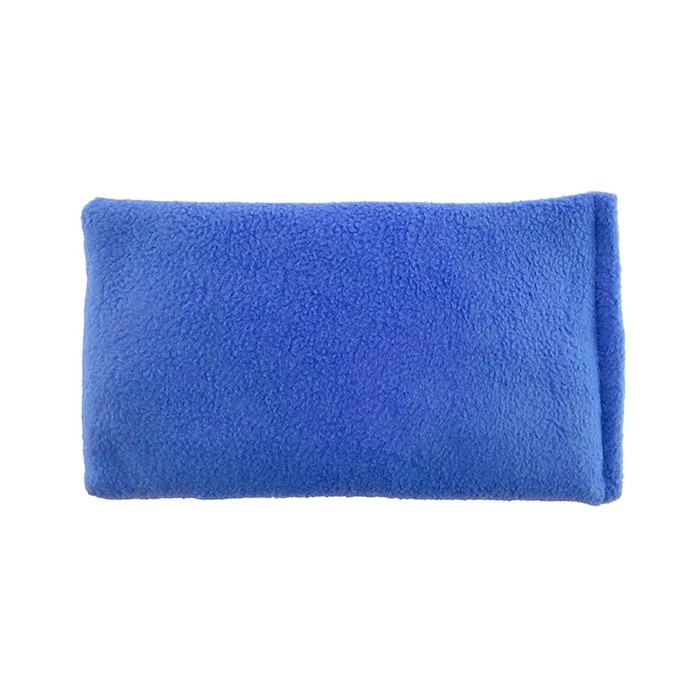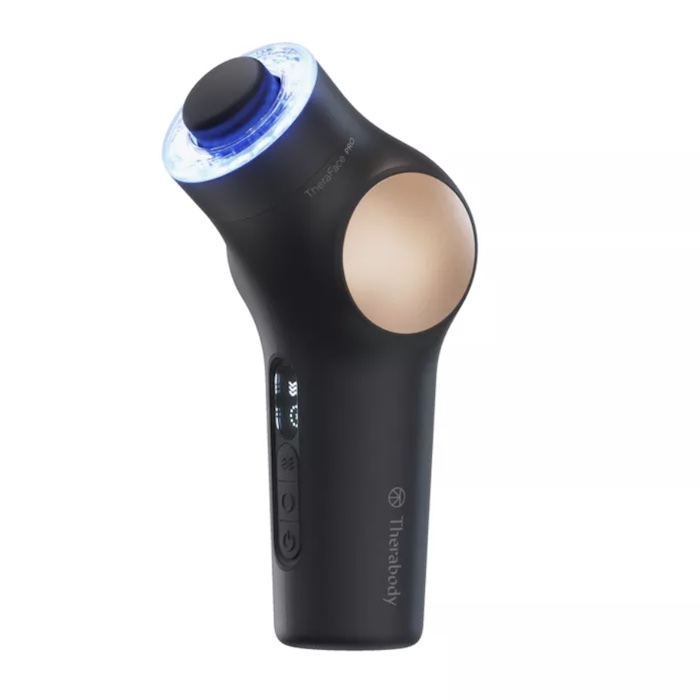I Have TMJ—This Beauty Tool Helps Me Slim, De-Puff, and Unclench My Jaw

I found out I had TMJ in college. It was around the same time that my anxiety reached an all-time high, which explains why I found myself clenching my teeth and experiencing almost constant pain and tension in my jaw, neck, and shoulders. (The subsequent headaches were no joke.) I was surprised that there was a name for it. It was only after my dentist felt my jaw and watched me open and close my mouth to see my range of motion that she told me what it was. She recommended I get a bite guard, lay off crunchy foods for the time being, and try to be more cognizant of clenching. That was that, and I went on my way.
Over time, I noticed just how closely my TMJ and mental well-being were linked. When I was feeling overwhelmed or burnt out—or worse, stuck in a cycle of anxiety attacks—my jaw pain and tension were there. When I was feeling better, my jaw pain and tension were gone (or, at least, noticeably decreased).
Cut to a few weeks ago, and my anxiety and subsequent TMJ set in again. It was also during this time that I learned about a new tool from a holistic beauty brand that promises to release long-held jaw tension and alleviate discomfort. The timing was kismet, so I decided to test it out. I've been using it for a few weeks now, and I've noticed a major difference. Not only does my jaw feel better, but it looks slightly slimmer and less puffy. Keep scrolling!

First, What Is TMJ?
According to Nojan Bakhtiari, DDS, a TMJ and orofacial pain specialist, "TMJ is an umbrella term for conditions that pertain to the jaw muscles, the jaw joint itself, and the associated ligaments. It can include a lot of subtle subcategories of things, such as someone could have arthritis in their jaw; someone could just have jaw tension; someone could have clicking. It can be different things for different people. It’s kind of like saying ‘bellyache’ or ‘lower back pain.’ It’s not specific."
Bakhtiari says the technical term is actually TMD (temporomandibular disorders), but TMJ is perfectly acceptable to use, as it's generally better understood. "It can involve the chewing muscles, which are in your lower jaw, but also your temple, which is why a lot of people experience headaches related to clenching and grinding," he explains. "For most people, the tension and the tightness are not at a level where it’s a serious condition. For some people, though, it can be. Bakhtiari says there’s a wide range of severity.

What Causes TMJ?
According to Jonathan B Levine, DMD, president of JBL New York City and founder of Glo Science, "The jaw is the only joint in the body that has two movements: It moves forward and also rotates as the mandible (lower jaw) functions. Think about all the things we use our jaws for: chewing, speaking, singing, laughing, and so much more. Our jaws are working overtime all day, every day! If we practice the destructive habits of clenching and grinding, the jaw, like any other joint in the body will get overworked." The result? Lactic acid buildup, spasms, and pain.
Cosmetic dentist Marc Lowenberg of Lowenberg, Lituchy Kantor in NYC says that stress is indeed a common cause of TMJ. "Life today seems to have become more and more stressful, and our bodies often take the brunt of that stress physically," he says." Apparently, the temporomandibular joint (that's where the acronym TMJ comes from) is one of the most affected areas. "There are a handful of muscles that help move the lower jaw within the socket of the skull, and when stress occurs, many people subconsciously clench and grind their teeth. Continued grinding and clenching throw those muscles of mastication into spasm, oftentimes causing the joint to stop operating optimally."

Bakhtiari says it can also be indicative of other conditions. "Some people might have an autoimmune disorder that manifests as TMJ pain. This week, I saw someone who had early onset osteoporosis secondary to Crohn’s disease and as a result was having bone deterioration in the jaw. While it can be a wide range of other ailments that present that way, I wouldn’t assume the worst-case scenario," he explains.
In fact, Bakhtiari says that most TMJ won't worsen on its own. "I know there’s a lot of fear-mongering, but usually, it’s self-limiting, meaning it won’t progress on its own. Also, most of it is very treatable," he says. It's only if it doesn't get better with standard therapies (more on that in a minute) that you should consider seeing a specialist.
"There’s one reason to see a specialist very quickly, and that’s if there’s a sudden decrease in the range of motion of your jaw along with pain," he says. "Normal jaw opening is about three finger widths, give or take. If all of a sudden it drops down to one or two, I think you should see a specialist sooner rather than later."

How Is TMJ Treated?
What many people might not realize is that there are two different types of TMJ: muscular and joint. Bakhtiari says the former is much more common than the latter. "Muscular is probably 80% of TMJ, and joint is probably 20%," he says. While muscular TMJ is often very well-managed at home, joint TMJ more often requires specialist intervention.
If it's indeed muscular TMJ (like in my case), Bakhtiari says there are a few easy and effective treatment modalities that you can turn to, including warm and cold compresses, OTC options like magnesium, CBD, and arnica, sticking to a diet comprised of softer foods, and massage.
My Experience
I've long been practicing self-massage to alleviate my anxiety-driven jaw pain and tension. By that, I mean I kneaded my fingers and knuckles into the corner of my jaw muscles whenever I realized I'd been clenching. It wasn't until a few weeks ago that I was introduced to this small, sculptural-looking massage tool that was designed specifically to alleviate jaw pain and tension. After just a couple of weeks of use, I can confidently say that it's a TMJ sufferer's dream. Bakhtiari backs up my experience with expertise, saying that massage can be extremely beneficial. "It’s doing a few things. It’s bringing some blood flow into the area. It’s stretching the structures. The muscle tightness and ropiness you’re feeling probably mean you have some muscle tension and adhesions, which it’s breaking up. Some tutorials for these massage tools I see include lymphatic drainage, which can also be therapeutic. It’s basically yoga or Pilates for your jaw, and that’s what makes it feel so good and allows it to heal."
Britta Plug, aesthetician and co-founder of Wildling Beauty, designed it specifically to release jaw tension. "I was an aesthetician in New York for over 15 years," Plug says. "Let me tell you, working on New Yorkers, I was like, ‘What are these rocks in people’s faces?’ Sometimes people wouldn’t even know; they thought it was a bone. They didn’t realize it was a muscle. I really wanted something to be able to get into the jaw muscle more."
Plug says the masseter muscle is pound for pound the strongest muscle in the body, which explains why it can be so difficult to release (especially when you're using your hands like I was). "Doing a lot of massage work on the jaw muscle with my hands was really fatiguing because it's so strong," she says. "I love having a tool to be able to get in there."
How to Use the Empress Wand to Relieve Jaw Tension
"There are a few areas we want to work on when releasing TMJ," Plug says. "There’s the masseter muscle itself, but you can also feel it through your neck and shoulders. I’ve never worked on a client who had jaw tension and wasn’t also tense through the neck and shoulders. We also have the temporalis muscle up in the scalp, and that assists in the clenching. They insert into each other. There’s a connection. That’s why the headache from TMJ can be widespread. It's not just localized pain, because the muscles are working in tandem."
She suggests applying a facial oil all over your skin to help the tool glide. Then, take the tool to the back of the neck. Starting under your hairline next to your spine, use the small, rounded edge of the tool to draw small circles up and down. Plug says this can be intuitive. Just go with a pace and pressure that feels good.
Then, move down to the top of the shoulder. Draw small circles before flipping the tool over to the thicker, rounded edge and swiping it across the top of the shoulder. This will help relieve any tension stored in the back of the neck and the shoulders.
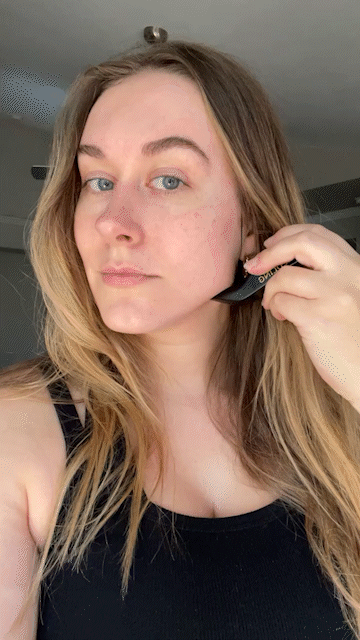
Once you're done working the neck and shoulders, take your tool to your jaw. Hook the tip under the jawbone and swipe back and forth. "We always want to be working in a way where the body can receive pressure and release," Plug says. "We don’t want to be using too much pressure because the tissue and the musculature are actually going to brace against that."
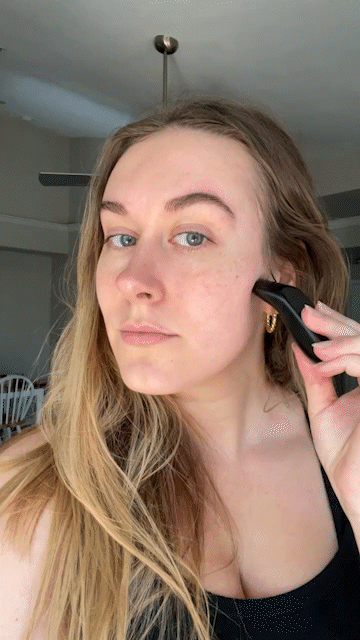
Next, find the place where the jaw muscle meets the cheekbone, or as Plug puts it, "where we would put contour." Use the fine tip of the massage tool and explore the area, applying a pressure that feels good and working the tool in circular motions.
"If you have a lot of jaw tension, I recommend committing to doing this every day and working it out over time," Plug says. For me, that means committing to doing it each night (or at least every other night) while watching reruns of The Office from my bed.
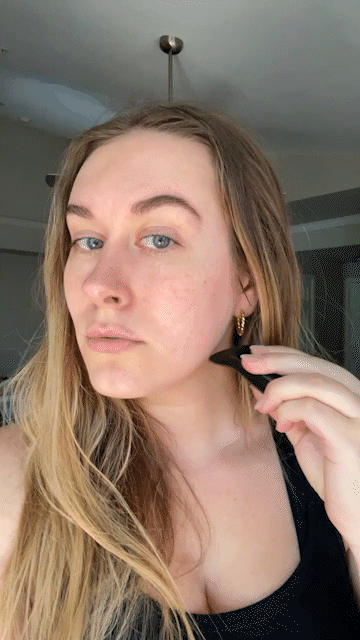
From there, Plug recommends swiping the tool up and down the masseter muscle using the same rounded edge of the massage tool. This is the point of the massage when I really start to feel my jaw tension dissolve. In fact, once I finish this part, I can feel a difference in the muscle. What starts out as a thick and ropey feeling becomes softer and laxer.
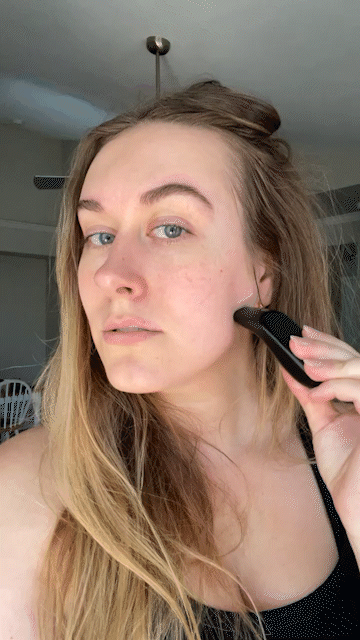
This is my favorite part of the whole process. I do as Plug does and clench my jaw to feel for the bulge of the muscle near the jawbone. (It's easy to find. I'm convinced this is where 99% of my jaw pain and tension comes from.) Using the tip of the tool, I massage in small circular motions, getting deep into the muscle. "So much of it is intuitive once you know where to work and the edges of the tool," she says. "Sometimes it feels good to vibrate and shimmy, and other times, I like to go slow. It’s just tuning in to what feels good."
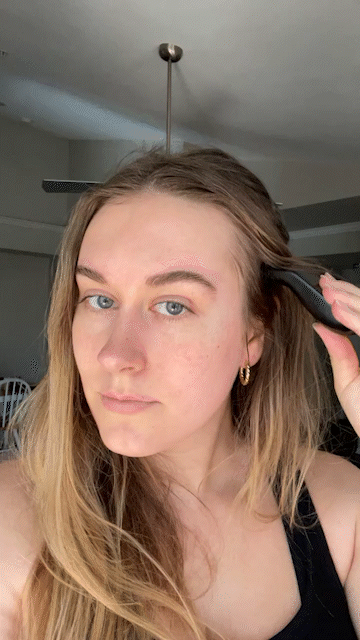
This part came as a surprise for me. Before speaking with Plug and Bakhtiari, I wasn't aware that the muscles above the ear and in the scalp are involved in TMJ. It makes sense, though. My blinding tension headaches have to come from somewhere, right? This small-but-mighty exercise helps alleviate them. Simply massage the tool in small circles directly above the ear.
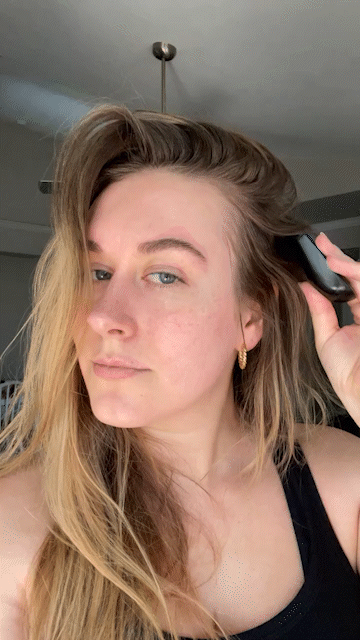
The final step is to go all around the temporalis muscle (aka, the muscle that spans the side of the scalp). Once you finish that, repeat the entire process on the other side. "This is a lengthy version," Plug says. "You can always do what feels right or what you have time for."
If you struggle with a lot of jaw tension, Plug says you can do this every single day. In fact, it's encouraged. "Keeping up with it regularly is where it’s at," she says. "Once your jaw is released, we’re actually able to much better drain lymph because if you have what’s basically a brick wall in your face, it’s going to act like a traffic jam; tight tissue does not exchange fluids well.”
It's also worth noting that releasing jaw tension can have a visible effect. "From a cosmetic perspective, just like any muscle can become bulky, the jaw muscle can create a square, wide face shape," Plug says. "When we release the jaw, it allows the cheekbones to pop a little bit more. Everyone’s talking about buccal fat removal, but what about some jaw release and some lymphatic drainage, guys?” I couldn't agree more. After using this tool day in and day out for a few weeks, I noticed a slight difference in the shape of my jaw. It looked slimmer and less puffy. Most importantly, though, my jaw doesn't seize up with tension after long, stressful days. It's a win-win.
Shop 3 More Products That Can Be Helpful for TMJ
Next, I Lived Like Melissa Wood-Tepperberg for One Week—4 Wellness Practices I'll Keep

Kaitlyn McLintock is a Beauty Editor atBest Knockoff Luxury Clothing . She has 10 years of experience in the editorial industry, having previously written for other industry-leading publications, like Byrdie, InStyle, The Zoe Report, Bustle, and others. She covers all things beauty and wellness-related, but she has a special passion for creating skincare content (whether that's writing about an innovative in-office treatment, researching the benefits of a certain ingredient, or testing Wholesale Replica Bag and greatest at-home skin device). Having lived in Los Angeles, California, and Austin, Texas, she has since relocated back to her home state, Michigan. When she's not writing, researching, or testing beauty products, she's working through an ever-growing book collection or swimming in the Great Lakes.

